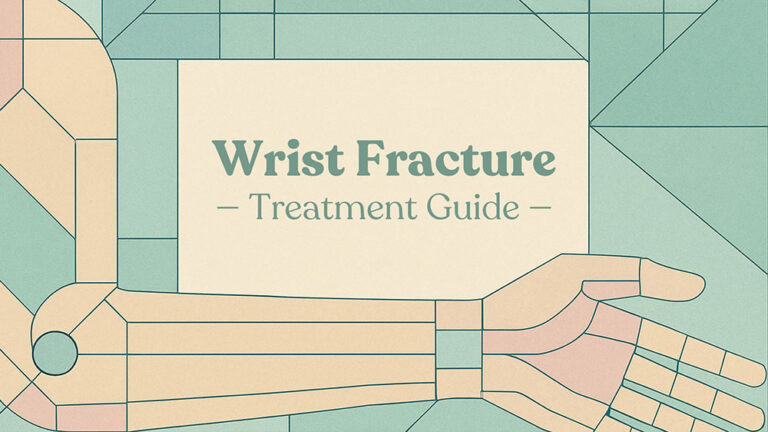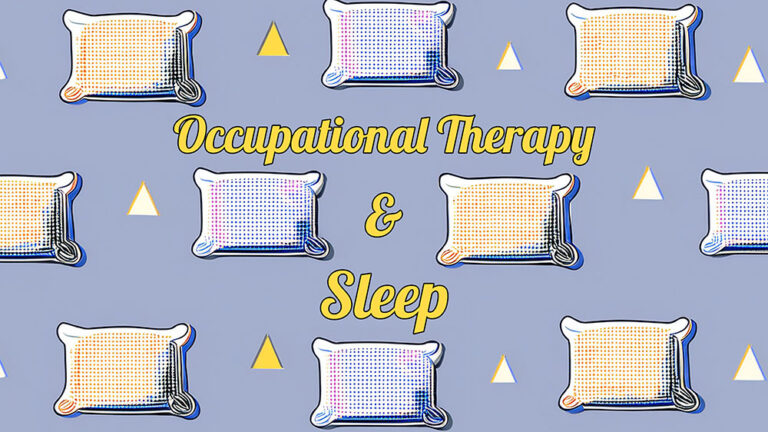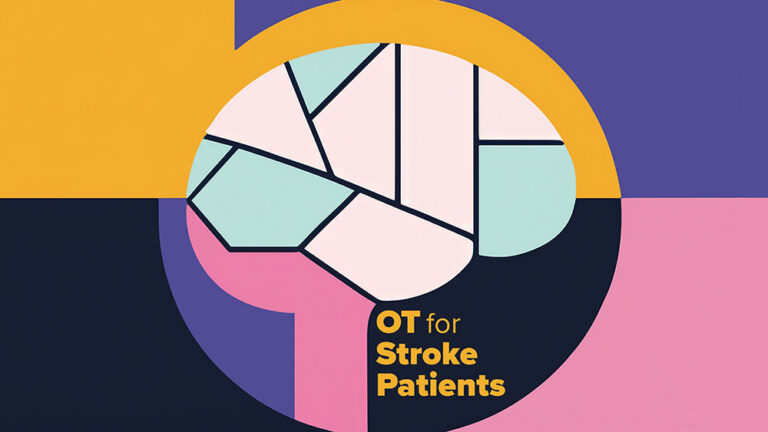Occupational therapy treatment interventions often focus on habit change. But, what this looks like varies across diagnoses and—more importantly—across the wide range of individuals we treat.
Here, you’ll find a high-level overview of where treatment fits into the occupational therapy process as a whole, the areas our treatments typically fall into, and links to condition-specific OT treatment guides.
OT Treatment within the OT Process
Occupational therapy is always individualized. But regardless of the individual client or their condition, the OT process tends to follow a common flow. As shown in the graphic below, we start with a thorough evaluation before progressing through collaborative goal-setting, on-going assessment, and ultimately, self-management. (I refer to this process as “EGOTS.”)
One important note: Our clients can range from infants to adults to entire communities. So, the end goal of “self-management” can be much broader than it sounds—and may involve caregivers, families, and whole communities.
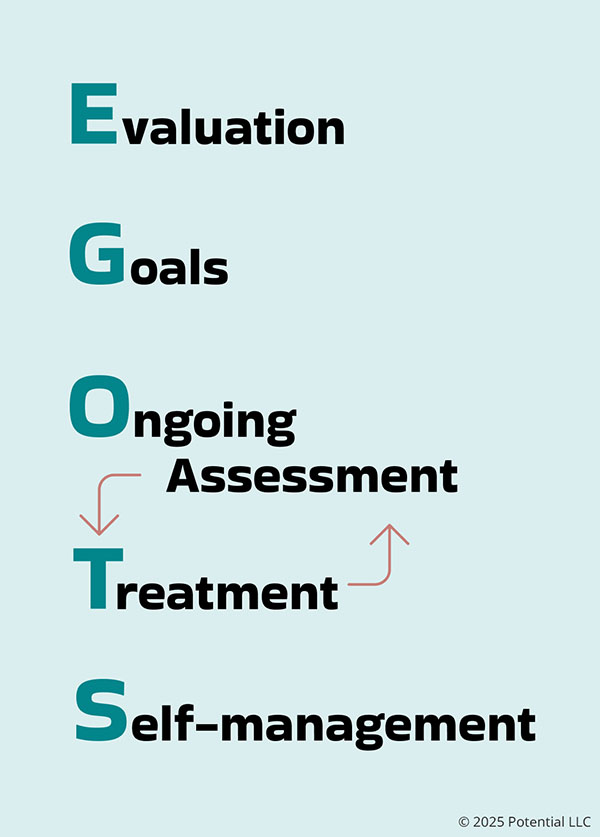
Occupational Therapy Treatment Areas
Our bread and butter as OTs is helping clients leverage their “daily occupations/habits” to change their health. The graphic below shows our main treatment areas, with condition-specific considerations layered on top of all pillars.
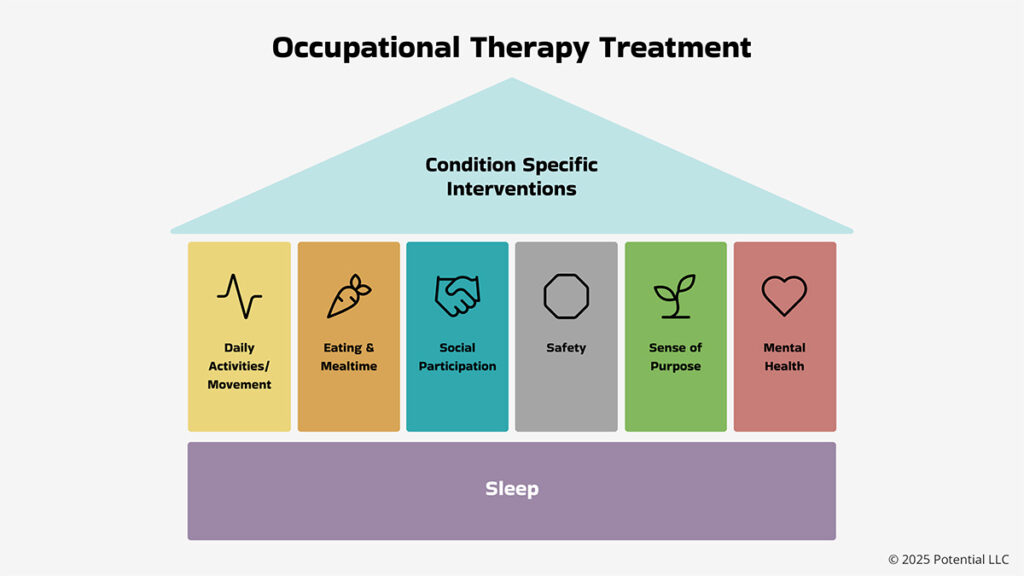
Occupational Therapy Treatment Guides
Here at OT Potential, we are working to create treatment guides spanning all of these categories.
And, for official OT Potential members, we offer comprehensive clinical decision support guides to match.. These are intended to serve as a menu of treatment ideas to help plan sessions, based on the need of individuals clients.
Condition Specific Treatment Guides
- Postural Orthostatic Tachycardia Syndrome (Coming soon!)
- Hypermobile Ehlers-Danlos Syndrome (Coming soon!)
- Golfer’s Elbow (Coming soon!)
- Selective Eating and Autism (Coming soon!)
- Perinatal Anxiety (Coming soon!)
Sleep
- Adult Sleep (Coming Soon!)
- Pediatric Sleep (Coming Soon!)
Occupational Therapy Example
The visuals above make occupational therapy seem simple—maybe even too simple. But, I cannot emphasize enough how powerful occupational therapy treatment can be.
One of my favorite graphics demonstrating the compounding impact of OT is the one below, which illustrates the hypothetical downstream cost savings of perinatal OT. When the client seeks OT care early for worrisome symptoms—going through the OT process described above and focusing on the appropriate treatment areas—we have the potential to lower the risk of needing high-cost specialist care down the road.
Even better: When OTs work in a value-based care model, we can actually treat the mom and baby together—amplifying our impact even more.
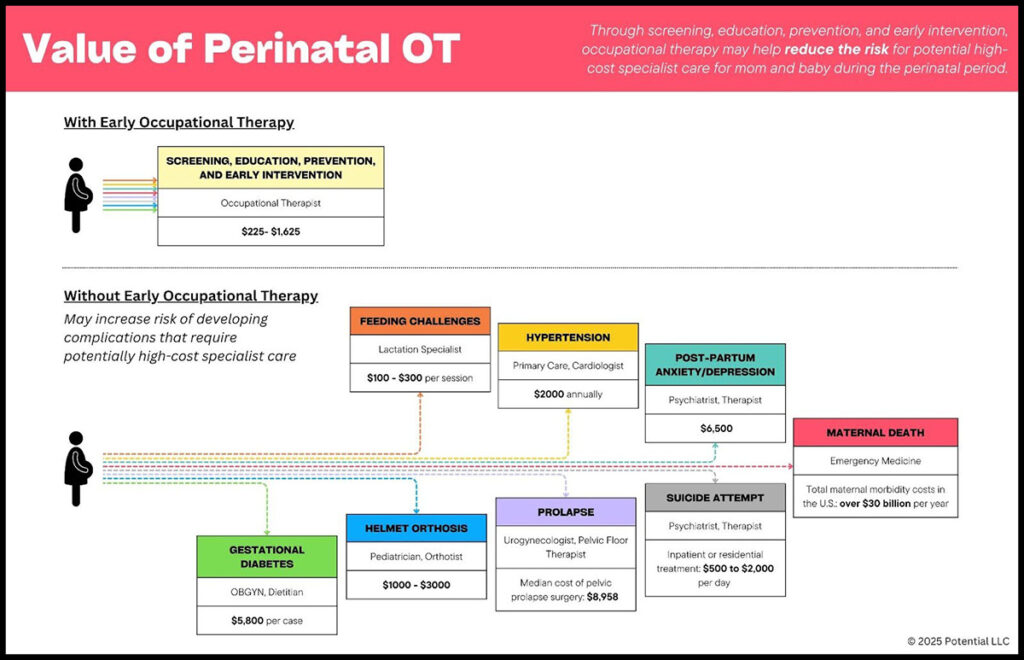
See where we got these cost-estimates:
- Gestational diabetes estimated medical costs
- Lactation consultant estimated rates
- Helmet Orthosis price
- Hypertension annual estimated medical costs
- Prolapse surgical intervention estimated cost
- Anxiety treatment (therapy and medication) estimated costs
- Inpatient psychiatric care estimated costs
- Maternal death societal cost
Stay tuned for a mapped out patient journey in this section, with corresponding treatment guides!
Conclusion
Hopefully this article has helped you visualize occupational therapy treatment and the OT process—and opened your mind to the many ways OT can help you!
If you have any questions, please contact us! And, if you are an OT professional, I hope you join us in the OT Potential Club to unlock our full clinical decision support resources, our many CEU courses, and tons of other awesome tools to help you elevate your OT practice.


